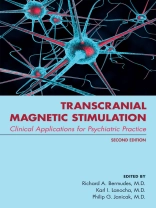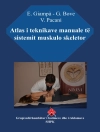Since the first transcranial magnetic stimulation (TMS) system was cleared by the U.S. Food and Drug Administration in 2008 to treat major depressive disorder in adult patients, the field of TMS has experienced tremendous growth. Despite the growing availability of this option—and expanding insurance coverage—many practitioners remain unsure about how to best apply TMS.
That is what makes this second edition of Transcranial Magnetic Stimulation: Clinical Applications for Psychiatric Practice such a critical resource. Updated to reflect the latest research and evolving clinical practices, this volume addresses practical aspects that include patient selection and practice management and delves into the clinical application of TMS in cases of treatment-resistant depression and other mood disorders.
Key updates in this guide include
• New chapters on the use of TMS for obsessive-compulsive disorder and important practice management tips for TMS clinicians.• Expanded content on integrating pharmacotherapy and psychotherapy with TMS, reflecting deeper integration into treatment strategies.• New guidance on using TMS in the treatment of major depressive disorder.• The incorporation of recent and future innovations, including theta burst stimulation, accelerated TMS, and frequency-personalized TMS.
The comprehensive chapters seamlessly blend current research with clinical vignettes that illustrate the expanding range of conditions treatable with TMS and how TMS is integrated into patient care. Key points aid in future reference.
Providing a detailed exploration of the latest clinical applications and innovations, as well as actionable advice and best practices, Transcranial Magnetic Stimulation: Clinical Applications for Psychiatric Practice is an invaluable manual for practitioners at all levels of experience who want to stay at the forefront of their field, make more informed decisions regarding patient care, and ensure treatment effectiveness.
สารบัญ
Contents Introduction Chapter 1. Basic Principles of Transcranial Magnetic Stimulation Chapter 2. Transcranial Magnetic Stimulation Therapy for Major Depression Chapter 3. Integrating Pharmacotherapy and Psychotherapy With Transcranial Magnetic Stimulation for Major Depressive Disorder Chapter 4. Transcranial Magnetic Stimulation for the Treatment of Other Mood Disorders Chapter 5. Risk Management Issues in Transcranial Magnetic Stimulation for Treatment of Major Depression Chapter 6. Transcranial Magnetic Stimulation for OCDChapter 7. Transcranial Magnetic Stimulation for Disorders Other Than Depression Chapter 8. Transcranial Magnetic Stimulation and Other Neuromodulation Therapies Chapter 9. Current FDA-Cleared Transcranial Magnetic Stimulation Systems Chapter 10. Transcranial Magnetic Stimulation: Recent and Future Innovations Chapter 11. Clinical Applications and Patient Selection: Who Should Be Referred for Transcranial Magnetic Stimulation Therapy?Chapter 12. Important Practice Management Tips for Transcranial Magnetic Stimulation Clinicians Appendix Transcranial Magnetic Stimulation Training Courses
เกี่ยวกับผู้แต่ง
Richard A. Bermudes, M.D., is President of Empathy Mind Care in Zephyr Cove, Nevada, and Associate Physician in the Department of Psychiatry and Behavioral Sciences at the University of California, Davis, in Sacramento, California.
Karl I. Lanocha, M.D., was Director of Education at Mindful Health Solutions in San Francisco, California.
Philip G. Janicak, M.D., is Adjunct Professor at and Consultant to the Neuromodulation Center in the Department of Psychiatry and Behavioral Sciences at Northwestern University Feinberg School of Medicine in Chicago, Illinois.












